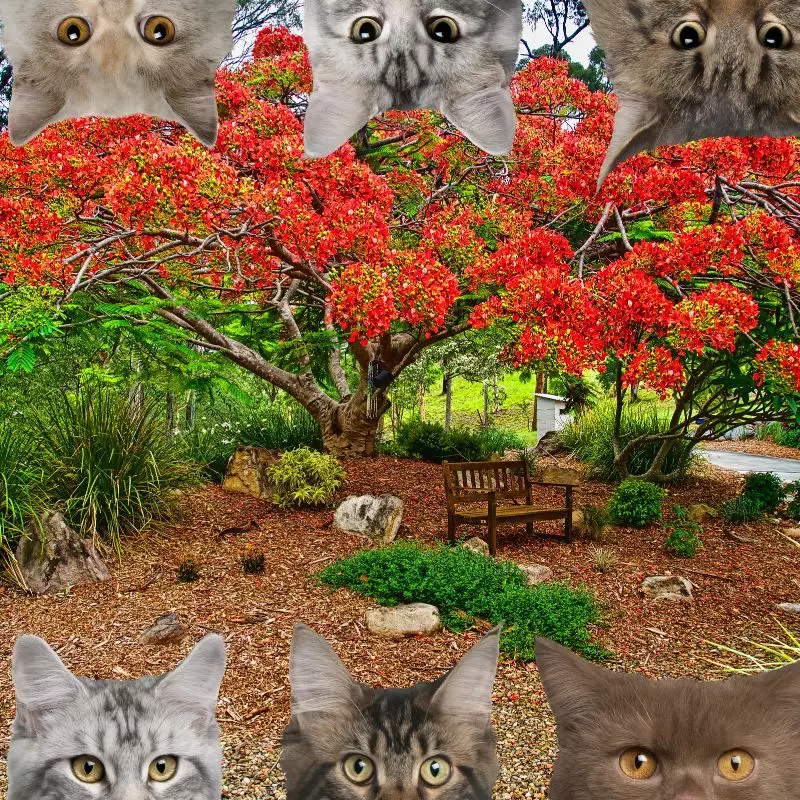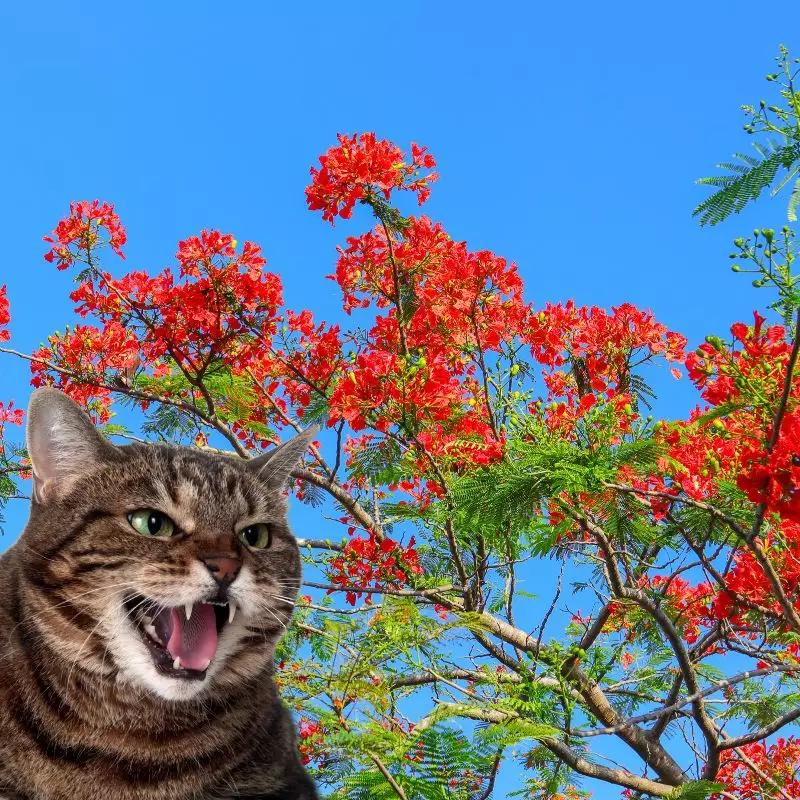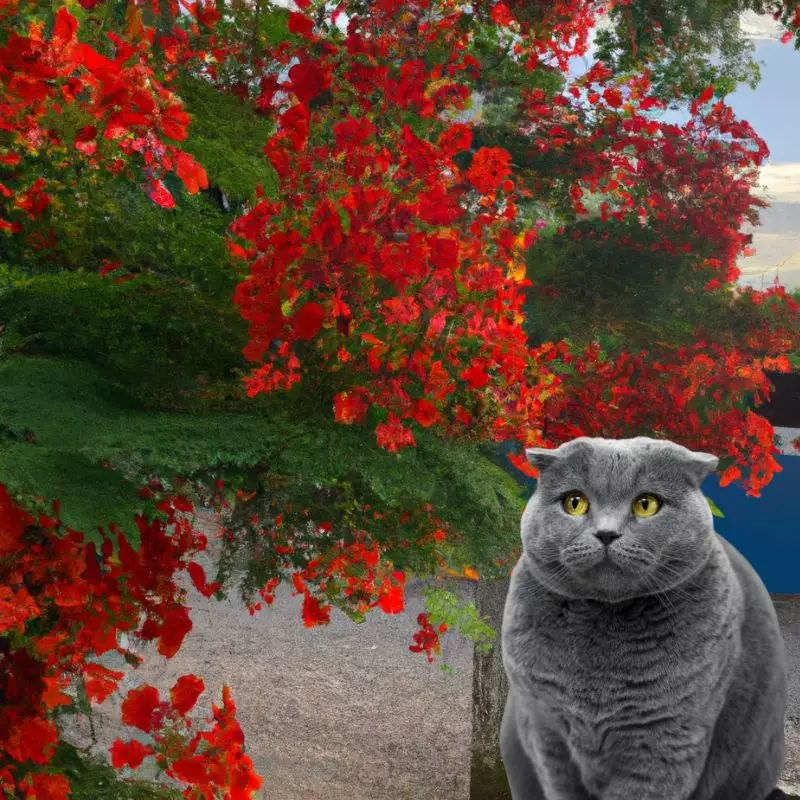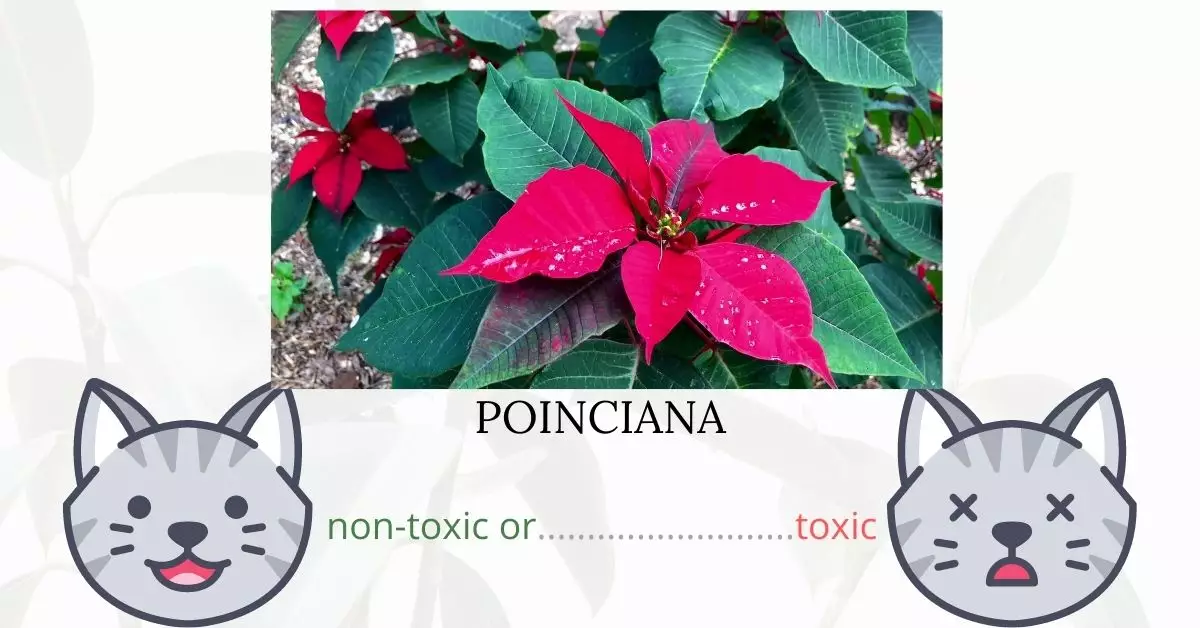Poinciana, scientifically identified as a member of the Leguminosae family, is renowned for its vibrant and ornamental appeal but is commonly mistaken for the bird of paradise due to its extravagant appearance, although it has no relation to the Strelitzia genus. The shrub is also recognized by several other names such as Peacock Flower, Barbados Pride, Dwarf Poinciana, and Pride of Barbados. It is crucial for pet owners, particularly cat owners, to understand that Poinciana does pose a toxic risk to cats. The greyish-green leaves of Poinciana contain a substance that transforms into highly toxic hydrogen cyanide when combined with the water components inside the body. Additionally, the seeds and flowers harbor multiple toxins like tannins, saponins, and a range of glutamine compounds (sesbanamides A, B, and C) which can prove detrimental to cats, causing symptoms primarily related to the gastrointestinal system and potentially affecting the kidneys, liver, and blood cells if absorbed into the bloodstream.
This article has been meticulously written and reviewed in collaboration with a team of experienced Doctors of Veterinary Medicine (DVMs) who have lent their expertise to ensure the provision of accurate, reliable, and up-to-date information regarding the risks and effects of Poinciana on cats. We have further substantiated our findings by researching high-authority veterinary and pet care websites like ASPCA and PetMD to provide a comprehensive understanding of the potential harm various plants, including Poinciana, can cause to cats. Through our collaborative efforts, we strive to raise awareness among pet owners about the significance of recognizing and preventing the exposure of their pets to toxic plants, ensuring the wellbeing and safety of our feline friends.
Clinical Signs of Poinciana Poisoning in Cats

When a cat comes into contact, inhales, or consumes any part of the Poinciana plant, a myriad of clinical signs may manifest, indicative of Poinciana poisoning. The ingestion of Poinciana seeds is especially precarious as the manifestation of symptoms might be delayed by several hours, implying that the plant material has been digested and toxins are already circulating within the body, thereby escalating the risk. Here are the detailed clinical signs of Poinciana poisoning and the underlying reasons for their occurrence:
- Vomiting: This is a primary response when the toxins from the plant interact with the cat’s gastrointestinal system, causing irritation and the body’s reflex to expel the poisonous material.
- Diarrhea (Potentially with Blood): The irritation and damage to the gastrointestinal lining by the toxins can lead to severe diarrhea, which may contain blood due to internal lesions.
- Abdominal Pain: The cat might experience significant discomfort and pain in the abdominal area owing to the internal inflammation and irritation caused by the ingested toxins.
- Loss of Appetite: The overall discomfort, abdominal pain, and internal distress can lead to a substantial decline in the cat’s desire to eat.
- Excessive Drooling: The irritation of the oral and gastrointestinal mucosa due to the toxins can trigger an increase in saliva production, leading to excessive drooling.
- Depression: Exposure to the toxins can affect the cat’s neurological system, leading to behavioral changes such as depression and lethargy.
- Muscular Weakness: The circulation of toxins can impact muscle function, causing weakness and potentially leading to a decrease in mobility.
- Shallow and Rapid Breathing: Respiratory distress may occur as the body responds to the circulating toxins, reflecting as altered breathing patterns.
Understanding these signs is crucial for early detection and intervention to prevent the progression of poisoning and to initiate prompt and appropriate veterinary care, thus safeguarding the cat’s health and wellbeing. Every pet owner should be vigilant about their cat’s behavior and physical condition after suspected exposure to Poinciana, ensuring immediate attention is given if any abnormalities are observed.
First Aid and Treatment of Poinciana Poisoning in Cats

If you saw the cat eating plant materials and there isn’t much time has passed, removing all of the stomach contents can be an effective way to get rid of the toxins. If the cat is awake, a small amount of hydrogen peroxide can be administered to induce vomiting. A gastric lavage procedure may also be used. This treatment may not be effective for cats who ingested poinciana seeds several hours before symptoms appeared.
Toxins in the cat’s stomach can also be eliminated using activated charcoal, which prevents further absorption. Intravenous fluids and electrolyte replacement can help the cat rehydrate and regain as much vigor as possible. Toxins may also be flushed out more quickly with IV fluids than if the body processed them on its own.
Recovery from Poinciana Poisoning in Cats

When it comes to poinciana poisoning, the quicker treatment is given, the more probable the cat is to survive. The overall prognosis will be determined by how much plant material was consumed and whether the plant’s seeds or leaves were consumed. Prevention is the greatest defense against poinciana poisoning, which may include keeping your cat indoors where you can monitor which plants it is exposed to.
Prevention of Poinciana Poisoning in Cats
The ideal way to prevent or minimize risk of plant poisoning in cats is to let them stay inside your house. Restrict their outdoor access and keep them occupied indoors. Mentally-stimulated cats are less likely to wander far away from home which can increase the possibility of encountering toxic plants in your surroundings.
If you love plants but have cats at home, check out these lists:





